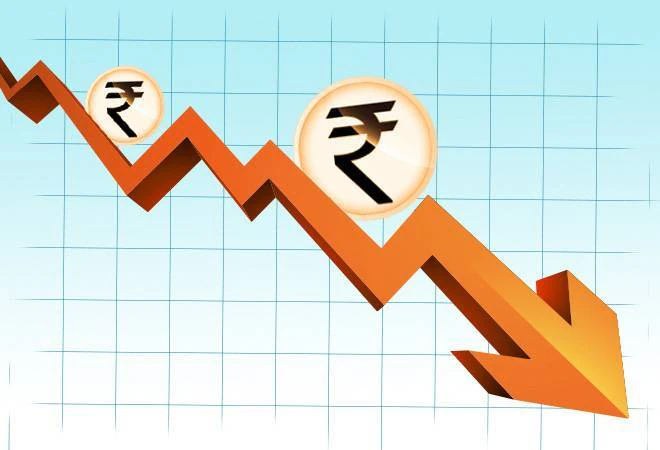Font size:
Print
India’s Growth Rate and Forecast
Context:
The First Advance Estimates (FAE) of National Accounts for 2024-25 report a real GDP growth of 6.4%, with nominal GDP growing at 9.7%. The growth figures fall below the Reserve Bank of India’s (RBI) projections of 6.6% real GDP growth and 10.5% nominal GDP growth.
Growth Rate Prospects for 2025-26
- The Gross Fixed Capital Formation (GFCF) rate at constant prices stabilises around 33.4% and is expected to remain steady in 2025-26.
- Incremental Capital Output Ratio (ICOR) is estimated at 5.1, making a 6.5% real GDP growth achievable.
- Growth will largely rely on domestic demand, with minimal changes expected in the global economic environment.
- Key assumption: India’s government maintains accelerated investment expenditure.
Key Findings
- Real Gross Value Added (GVA) growth is also 6.4%, down from 7.2% in 2023-24, with nominal GVA growing at 9.3%.
- The manufacturing sector saw a significant decline in growth, dropping from 9.9% in 2023-24 to 5.3% in 2024-25.
- The sharp reduction in annual GDP growth from 8.2% in 2023-24 to 6.4% is primarily attributed to a decline in government capital expenditure.
Medium- to Long-Term Growth Prospects
- Potential GDP Growth: Estimated at 6.5% over the next five years.
- Nominal GDP Growth: Projected to remain in the range of 10.5%-11%.
- Real GDP Growth: May occasionally touch 7% with favourable global conditions.
- Development Goals: Achieving consistent growth rates could position India for developed country status in 25 years.
Key Highlights of the Report
- Sectoral Performance:
- Agriculture and allied sectors: Growth rate increases to 3.8% from 1.4% in 2023-24.
- Construction sector: Growth rate improves to 8.6%.
- Financial, Real Estate & Professional Services: Growth rate at 7.3%.
- Consumption Trends:
- Private Final Consumption Expenditure (PFCE): Growth rises to 7.3%, compared to 4.0% in 2023-24.
- Government Final Consumption Expenditure (GFCE): Growth rebounds to 4.1% from 2.5% in the previous year.
- GDP Estimates:
- Real GDP for 2024-25: ₹184.88 lakh crore.
- Nominal GDP for 2024-25: ₹324.11 lakh crore.
- Real GVA for 2024-25: ₹168.91 lakh crore.
Reasons for the Dip in Growth
- Fall in Government Capital Expenditure: A significant factor behind the decline in GDP growth.
- Manufacturing Sector Weakness: Growth fell sharply to 5.3%.
- Global Economic Conditions: Lack of significant improvement in global trade and investment trends.
Impacts of Lower Growth Rate
- Revenue Shortfall: The budgeted GTR of ₹38.4 lakh crore may not be achieved due to lower-than-expected nominal GDP growth.
- Missed Capital Expenditure Targets: Only 46.2% of the budgeted capital expenditure (₹5.14 lakh crore) achieved by December 2024, leading to constrained economic growth.
Government Measures to Ensure Growth Targets
- Sustaining Capital Expenditure: No relaxation in government capital expenditure to prevent a repeat of 2024-25. Accelerate capital expenditure growth to 20% on revised estimates.
- Stimulating Private Investment: Design investment expenditure patterns to encourage private sector participation.
- Improving Revenue Realisation: Maintain high tax buoyancy to minimise shortfalls in Gross Tax Revenue (GTR).
Challenges to Maintain the Growth Figures
- Geopolitical Uncertainty: The election of Donald Trump in the U.S. could create global economic instability.
- Decline in Government Capital Expenditure: Negative growth of (-)12.3% in government investment contributed to lower overall GDP growth in 2024-25.
- Private Investment Challenges: Slow private investment recovery despite government efforts.
Way Forward to boost growth figures
- Increase Public Investment: Maintain high government capital expenditure to stimulate the economy.
- Boost Private Investment: Create policies to encourage private sector participation, leveraging government spending.
- Focus on Structural Reforms: Improve productivity and reduce ICOR for sustained growth.
Conclusion
- Steady Growth Outlook: While achieving 6.5% growth will become more challenging over time, consistent efforts can sustain this level.
- Balancing Expenditure and Revenue: The government must focus on ensuring both fiscal prudence and sustained capital expenditure.
- Collaborative Investment Strategy: Government and private sector cooperation is essential for long-term economic resilience.


